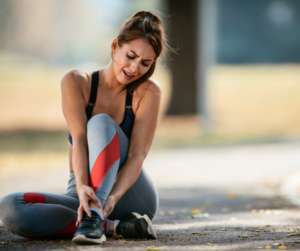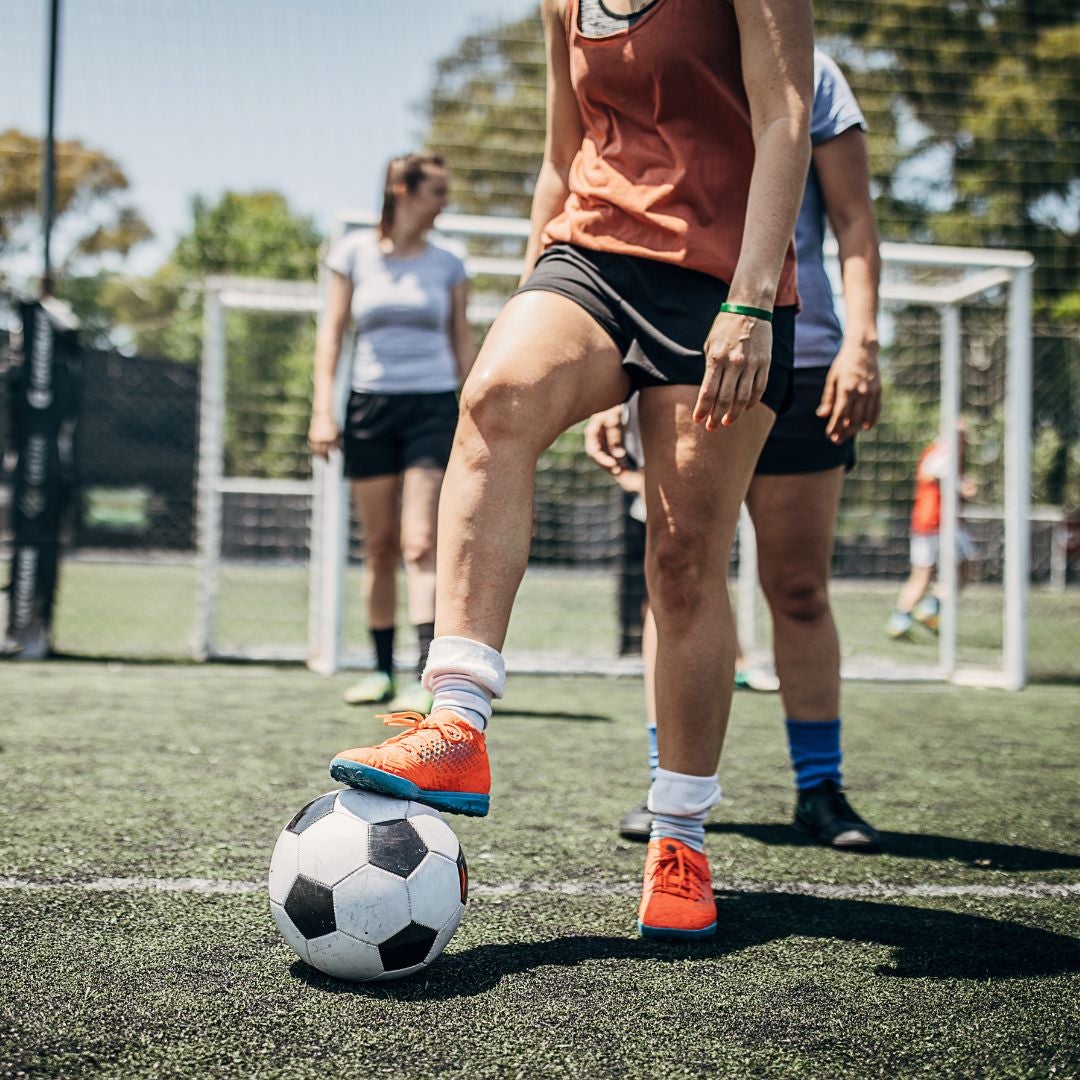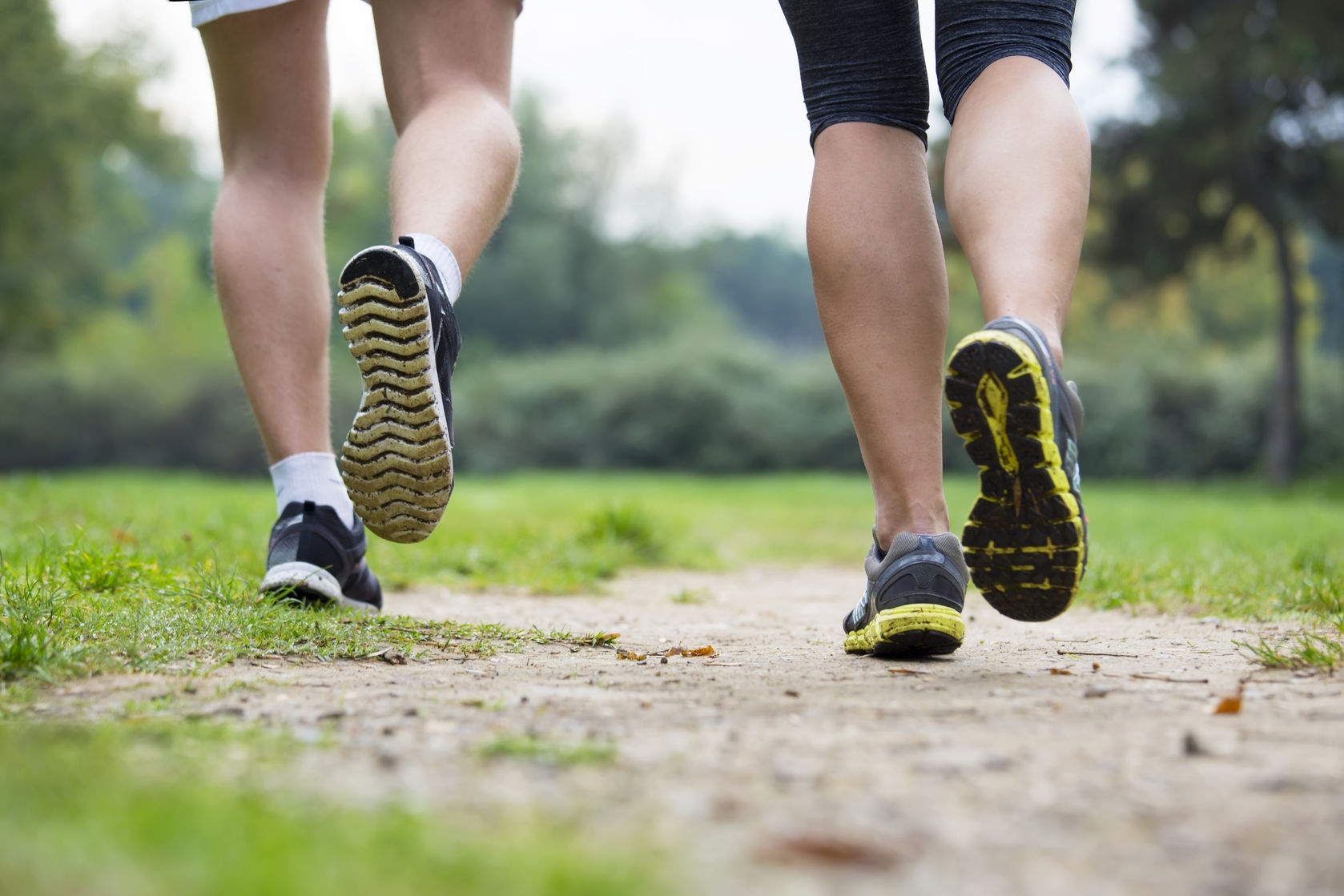-
5 Common Foot and Ankle Injury Myths in Sports

From little league to professional sports, foot and ankle injuries are some of the most common among athletes. And unfortunately, many misconceptions and myths surround these issues, which can hinder recovery.
In this post, we will debunk these myths to help athletes better address their foot and ankle troubles.
Myth 1: All Ankle Sprains Are the Same.
Fact: Ankle sprains vary in severity, ranging from mild to severe. While most ankle sprains involve the ligaments on the outside of the ankle, some can also affect the ligaments on the inside. That’s why you should seek a medical evaluation to determine the extent of the injury.
Myth 2: You’re Right, Coach. I’ll Rub Some Dirt on It.
Fact: Continuing to play with pain can worsen an injury and delay recovery. If you experience pain in your foot or ankle, it’s important to rest and seek medical attention. Overuse injuries and stress fractures are common for athletes who are too stubborn to stop.
Myth 3: Rest Or Surgery. There’s No In Between.
Fact: While rest is often recommended for minor injuries and surgery is sometimes required for season-ending injuries, there lies a full spectrum of intervention between these two extremes:
- Physical therapy: Exercises to strengthen the surrounding muscles and improve stability.
- Corticosteroid injections: These injections can help reduce inflammation and pain in the affected joint.
- Anti-inflammatory medications: Over-the-counter or prescription medications can help alleviate pain and reduce inflammation.
- Orthotics: Custom orthotics may be necessary to address underlying foot mechanics.
Myth 4: All Foot Pain is Caused by Plantar Fasciitis.
Fact: While plantar fasciitis is a common cause of foot pain in athletes, it’s not the only possibility. Other conditions, such as Achilles tendonitis, turf toe, neuromas, and others listed above, can cause pain and limit performance.
Myth 5: Once an Injury Heals, You’re Good to Go.
Fact: Even after an injury heals, it’s important to continue rehabilitation exercises to prevent re-injury. Strengthening the surrounding muscles and improving flexibility can help enhance stability and reduce the risk of recurrence.
Want to start taking your foot and ankle health seriously? We’re happy to help! Schedule a comprehensive foot examination with Kentlands Foot and Ankle Center podiatrist Dr. Jon M. Sherman. To book your appointment, please call our office at 301-825-9697.
-
Keep Your Feet Flowing: Blood Flow and Circulation in the Lower Extremities

February is American Heart Month, a timely reminder to prioritize our cardiovascular well-being. However, while most focus remains on the heart itself, its connection to our feet and lower extremities tends to go unnoticed.
The truth is that healthy blood flow and circulation are crucial for happy, healthy feet. Let the team at Kentlands Foot & Ankle Center delve into this vital relationship for you! Together, we’ll explore how to keep your feet flowing freely.
Heart Health Basics
Your heart pumps tirelessly and constantly, sending oxygen-rich blood throughout your body. But that doesn’t mean there aren’t any problems.
- In terms of distance, your heart works hardest to send blood to your feet, which are as far away from it as possible.
- When this intricate system functions well, your feet receive the nutrients they need to stay healthy and function optimally.
- When something goes amiss, your feet are typically the first to find out.
When the Flow Filters
Disruptions to your circulation tend to translate into problems for your feet.
- Conditions like peripheral artery disease (PAD) – which affects nearly 34 million Americans – narrow arteries, restricting blood flow to the lower extremities.
- This can lead to symptoms such as pain, numbness, and even tissue damage in severe cases.
Circulation Education
Fortunately, several measures can promote healthy blood flow and circulation in your feet:
- Regular exercise, including walking, improves circulation throughout your body, including your lower extremities.
- Avoid tight shoes that constrict blood vessels in your feet.
- If you have diabetes or high blood pressure, work with your doctor to manage these conditions effectively.
- Consult a podiatrist promptly for any concerns like pain, numbness, or changes in skin color or texture.
When in doubt, it never hurts to consult a DPM with a proven reputation for knowing how to handle all kinds of foot and ankle complications!
Schedule a comprehensive foot examination with Kentlands Foot and Ankle Center podiatrist Dr. Jon M. Sherman. To make your appointment, please call our office at 301-330-5666.
-
Running Shoes: Start Off on The Right Foot!

If you run, you need the right footwear. Fortunately, Kentlands Foot and Ankle Center is well-prepared to support your footwear needs. Before you decide which shoe is right for you, let’s break down some common tips that can improve performance and ensure sustainability.
Here are some Do’s and Don’ts to follow before purchasing new running shoes
DON’T run in old, beat-up shoes. Runners need to be prepared, and footwear is no exception. To keep shoes fresh, try to have two pairs on hand and alternate them. The wear and tear from repeated motions erodes the support of a running shoe, which might increase your risk of injury.
DO invest in a pair of good socks and laces. The right pair of socks will provide valuable cushioning and even help with sweating. Laces with ‘bumps’ along them might cost a little more, but they don’t slide around in your shoes.
DON’T ignore the unique traits of your feet. Do you have high, flat, or neutral arches? Do your ankles roll when you run? These are the kinds of details our experts can help you with, and knowing about them beforehand will help you choose the right shoes for you.
DO consider custom orthotics. These can enhance your running game by helping to prevent injuries before they occur. And we can help you find the perfect fit! At Kentlands, there are no more clunky plaster casts or lengthy waiting times. Instead, we employ our new 3D laser scanner to perform a clinical examination of your feet. In just 10 seconds, this technology takes thousands of measurements and provides the perfect custom fit.
We’re big fans of running, and we know just how much it can benefit your life. Still, putting safety first is important. Dr. Jon Sherman is an acknowledged expert in treating sports injuries, and he has served as a consultant for the Marine Corps Marathon. He’s well-equipped to help improve your athletic performance and keep your feet healthy as you chase your goals. To schedule a comprehensive foot examination with Dr. Sherman at our Gaithersburg office, please call 301-330-8971 or contact us online today.
-
Swift Steps and Setbacks 3 Common Foot and Ankle Injuries in Women’s Soccer

In women’s soccer, both at the amateur and professional levels, players are prone to various foot and ankle injuries due to the dynamic nature of the sport and the repetitive stress placed on these areas during matches and training.
Here are 3 common foot and ankle injuries prevalent in women’s soccer:
1-Ankle Sprains
Ankle sprains are among the most prevalent injuries in women’s soccer. They occur when the ligaments surrounding the ankle joint are stretched or torn, usually as a result of sudden changes in direction, collisions with other players, or landing awkwardly after a jump. In amateur and professional contexts, the intensity and speed of the game can increase the risk of ankle sprains. Female players, in particular, might be more susceptible due to differences in lower limb alignment and hormonal factors affecting ligament laxity. Ankle sprains can range from mild to severe, with swelling, pain, and limited range of motion being common symptoms. Management includes the R.I.C.E. protocol (rest, ice, compression, elevation), followed by physical therapy to restore strength and stability. Preventive measures include balance training, proprioceptive exercises, and using proper footwear.
2-Achilles Tendonitis
Achilles tendonitis is another prevalent injury in women’s soccer. The Achilles tendon connects the calf muscles to the heel bone and is subjected to significant stress during sprinting, jumping, and sudden stops. Overuse and improper training techniques can lead to microtears and inflammation in the tendon. Players may experience pain, stiffness, and swelling in the back of the ankle. In the professional sphere, rigorous training schedules and frequent matches can exacerbate the risk of Achilles tendonitis. Treatment involves rest, targeted stretching and strengthening exercises for the calf muscles. In severe cases, immobilization and even surgical intervention may be necessary. Proper warm-up routines, gradual increases in training intensity, and adequate footwear can help prevent this injury.
3-Metatarsal Stress Fractures
Metatarsal stress fractures are common in women’s soccer due to the repetitive impact and running involved in the sport. These fractures occur when the bones in the forefoot (metatarsals) experience repeated strain, often from overuse without adequate rest. In both amateur and professional contexts, female soccer players can be at risk due to the high number of games and training sessions. Players with stress fractures may feel localized pain, swelling, and discomfort during activity. Treatment requires rest, often with the use of protective footwear or even a walking boot. Gradual return to play and modifications in training intensity are necessary to prevent re-injury. Ensuring proper nutrition and bone health, as well as monitoring training load, can play a crucial role in preventing metatarsal stress fractures.
Foot and ankle injuries are common in women’s soccer, both at the amateur and professional levels. Ankle sprains, Achilles tendonitis, and metatarsal stress fractures are particularly prevalent due to the demands of the sport, player-specific factors, and the intensity of training and matches. Preventive measures, including targeted exercises, adequate rest, proper warm-up routines, and attention to training load are essential to minimize the occurrence of these injuries and maintain the long-term health and performance of female soccer players.
Whether you or a member of your family have experienced an injury while participating in a sport, or leisurely walking, contact Kentlands Foot and Ankle Center podiatrist Dr. Jon M. Sherman at our Montgomery office. Please call our office today, at 301-330-5666 to schedule your appointment or visit our website.
-
3 Do’s and 3 Don’ts for Runners

You do not need to run every day of the week to benefit your health. Running just a few minutes each day may be good for you. Research shows it may even extend your life. No matter where you run, putting your safety first is vital. Below, our team of experts is sharing Dos and Don’ts for runners and outdoor athletes.
Do: Whether you’re an experienced runner or just getting started, begin the season by visiting your foot doctor.
With years of experience, including a hospital residency, your podiatrist is a medical expert and the best-qualified doctor to examine your feet, diagnose any existing or potential issues, and offer expert care.
Do: Build your endurance slowly.
Start with moderate length and low-speed runs, and work your way up to long runs at faster paces. Keep a journal to help you record your progress. It will help protect you from shin splints and other foot and ankle injuries. It will also give you something to work toward.
Do: Check out your route in advance and run on smooth, well-paved roads.
If you take a spill and can’t resolve the discomfort with over-the-counter medication and at-home RICE (rest, ice, compression, elevation) treatment, see your podiatrist as soon as possible.
Don’t: Don’t run in sneakers that have logged over 50 miles or are over a year old.
Be sure your footwear offers excellent cushioning and support. Remember that your foot size changes over the years.
Don’t: Don’t run with traffic if you are running in your neighborhood.
One of the most basic road rules is to drive/bike with traffic and run against it. You can only go so fast and be aware on two feet; increase your safety by seeing danger as it’s coming.
Don’t: Don’t overdo it.
Running is great, but don’t run yourself into the ground. Listen to your body; if you’ve pulled something, have shin splints, or have any other significant pain, it won’t help to pop a painkiller and run through it. Stop for a break when you need to, and get back up again eventually.
Schedule a comprehensive foot examination with Kentlands Foot and Ankle Center podiatrist Dr. Jon M. Sherman at our Montgomery office. Please call our office at 301-330-5666 to schedule your appointment.
-
Global Running Day

Get your legs moving on the first Wednesday of June and celebrate Global Running Day! Whether you are a regular runner or a beginner, celebrating Global Running Day can be simple and exciting. At Kentlands Foot & Ankle Center, we want to inspire and support our patients to live healthy lifestyles. Below we have curated all the ins and outs of Global Running Day.
What Is Global Running Day?
Global Running Day is a worldwide celebratory movement to encourage people of all ages to get moving. Regardless of the experience or ability, Global Running Day serves as a reminder of the power of movement and unification. No matter where you run, we are all in this together to encourage each other to keep moving, stay connected, and be healthy.
Traditions
Every year for Global Running Day, millions of people worldwide pledge to participate in some running activity by submitting their names to the Global Running Day website. Traditionally, a 5k race would be held, or folks would hit the trails. Regardless of where you decide to get moving, Global Running Day celebrates the history of running- what running means to our ancestors and what running means today.
Global Running Day in Numbers
- 59,838,621 – the number of race miles runs in the U.S. in 2020.
- 55% – the percentage of women who accounted for road race finishers in 2019.
- 518,000 – the number of Americans who finished a marathon in 2019.
- $2.46 billion – the amount spent on running shoes in 2011.
Running Self Care
At Kentlands Foot & Ankle Center, we want to remind all our patients of the importance of self-care, especially when it comes to physical activities.
- Take At Least One Rest Day a week to allow your muscles to recover and rebuild.
- Fuel Up on High-Carb, and Moderate Protein Meals 3–4 hours before a long-distance training run or event. In the 30–60 minutes leading up to a run, stick with a light, high-carb snack.
- For any run that lasts longer than 90 minutes, make sure to fuel up with a refreshing sports drink and continue to stop and take water breaks.
Visit Your Podiatrist. At least once every year, you should check in with your podiatrist. A podiatrist can examine your feet and treat any potential problems before they worsen. To schedule an appointment with our board-certified podiatrist Dr. Jon M. Sherman, at our Montgomery County office, call 301-330-5666 or visit our website for more information.
RECENT POSTS
categories
- Uncategorized
- Featured Articles
- Foot Disorders
- Broken Ankle
- Broken Toe
- Fracture
- Foot Health
- Foot Care
- Arthritis
- Foot Pain
- Skin Cancer
- Podiatry Appointment
- Custom Orthotics
- Podiatrist
- Diabetes
- Gout
- Heart Health
- National Nutrition Month
- National Foot Health Awareness Month
- Foot Safety
- Foot and Ankle Injuries
- Falls Prevention
- Chronic Heel Pain
- Shoes
- Laser Therapy
- Quoted
- Physical Therapy
- KeryFlex
- Sweat
- Summer Foot Care
- Sports Injury
- ESWT
- Fungal Toenails
- Bunion
- Plantar Fasciitis
- PinPointe Laser


